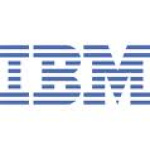- Industry: Computer
- Number of terms: 98482
- Number of blossaries: 0
- Company Profile:
Sometimes referred to as “Big Blue” IBM is a multinational corporation headquartered in Armonk, New York. It manufactures computer hardware and software and provides information technology and services.
(1) A mechanism on a pointing device, such as a mouse, used to request or start an action.<br />(2) A graphic that executes an action when clicked.
Industry:Software
(1) A member of a set of similar programs or packages and, in DB2 for z/OS, similar DBRMs or LOBs.<br />(2) A separately licensed program that usually has significant new code or new function.<br />(3) An object that implements a particular revision of an element. The versions of an element are organized into a version tree structure. See also checked-out version.
Industry:Software
(1) A message or a displayed symbol that requests information or user action. The user must respond to allow the program to proceed.<br />(2) In WebSphere Voice Response, a program that uses logic to determine dynamically the voice segments to be played as a voice prompt.<br />(3) A component of an action that indicates that user input is required for a field before making a transition to an output screen.
Industry:Software
(1) A characteristic of an object that controls which programs can access the object. See also system domain object, user domain object.<br />(2) A set of systems that allocate shared network resources within a single logical system.<br />(3) In communications, the network resources under control of a particular system services control point (SSCP).<br />(4) In TCP/IP, a named set of hosts. Each domain has authority for the machines within that domain, but not for machines in other domains.<br />(5) In a database, the set of valid values for an attribute.<br />(6) A logical grouping of resources in a network for the purpose of common management and administration.<br />(7) In the Internet, a part of a naming hierarchy in which the domain name consists of a sequence of names (labels) separated by periods (dots).<br />(8) A part of a network that is administered as a unit with a common protocol.<br />(9) A functionally isolated area of the CICS system that owns resources to which it has sole access and that communicates with other parts of CICS through strictly defined interfaces called gates.
Industry:Software
(1) A message or other indication that signals an event or an impending event.<br />(2) A notice that describes replication events and conditions. The Replication Alert Monitor sends alerts to an e-mail address or to a pager.<br />(3) To cause the user's terminal to give some audible or visual indication that an error or some other event has occurred.
Industry:Software
(1) A characteristic of an object that describes the object. A property can be changed or modified. Properties can describe an object's name, type, value, or behavior, among other things.<br />(2) A characteristic or attribute that describes a unit of information.<br />(3) Any configurable information about a WebSphere business integration component. A component typically has properties that are common to all components of that type (for example, standard connector properties) as well as properties that are specific to that component (for example, connector-specific properties). See also business object property, collaboration property, standard property.<br />(4) In the Common Information Model (CIM), an attribute that is used to characterize instances of a class.
Industry:Software
(1) A message that provides information about the system and is not the result of an error condition. This message does not require a response.<br />(2) In Q replication and event publishing, a message about the status of the Q Capture program, a Q subscription, or an XML publication.
Industry:Software
(1) A message with a description that is created and stored in a message file before it is sent by the program. See also immediate message.<br />(2) A message for which a matching definition exists in the message model with an appropriate set of properties and in the correct context. See also self-defining message, predefined element.
Industry:Software
(1) A characteristic or trait of an entity that describes the entity; for example, the telephone number of an employee is one of that employee's attributes.<br />(2) In user interface manager (UIM) tag language, an identifier used with related material that takes on a specific meaning, such as an action to be taken or the characteristics of text or data.<br />(3) In object oriented programming, a property of an object or class that can be distinguished distinctly from any other properties. Attributes often describe state information.<br />(4) A property, quality, or characteristic whose value contributes to the specification of an element or program function. For example, "cost" or "location" are attributes that can be assigned to a resource. See also array attribute, simple attribute, single-cardinality attribute.<br />(5) Data associated with a component. For example, a server component might have attributes such as host name, IP address, operating system type, operating system version, number of CPUs, CPU speed, type of RAM, number of hard drives, network domain, and so on.<br />(6) Descriptive information that provides important details about a requirement or discussion.<br />(7) The information, data, or properties that belong to instances of a classifier.<br />(8) In markup languages such as SGML, XML, and HTML, a name-value pair within a tagged element that modifies features of the element.<br />(9) A system or application element being monitored by a monitoring agent, such as Disk Name and Disk Read/Writes Per Second.
Industry:Software
(1) A circuit that increases the signal current for sending data over long cables or to many other circuits.<br />(2) A circuit that sends small electronic signals to a device.
Industry:Software
